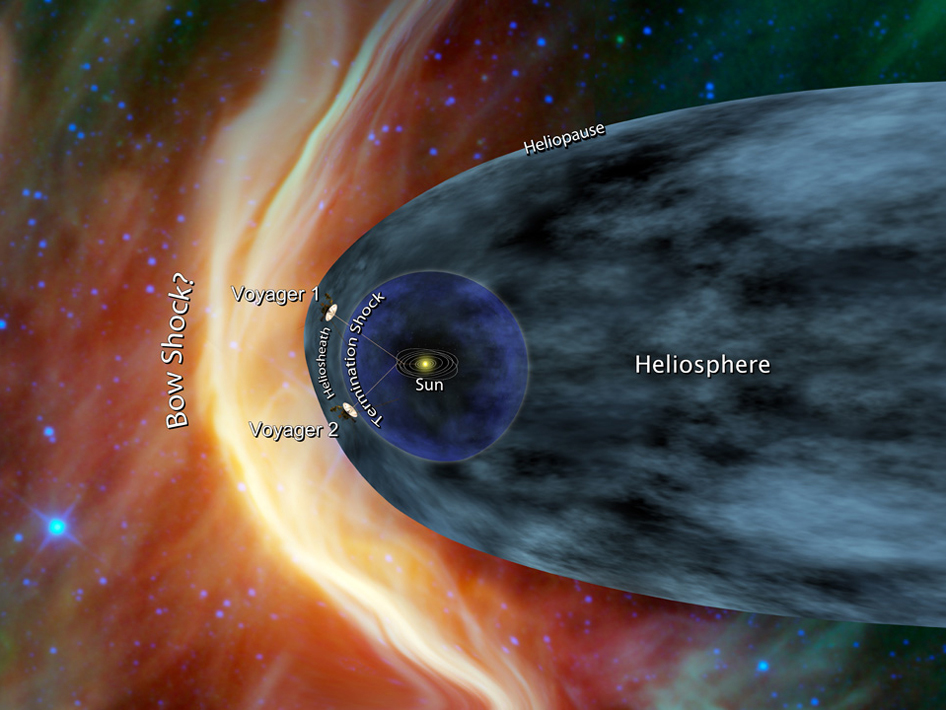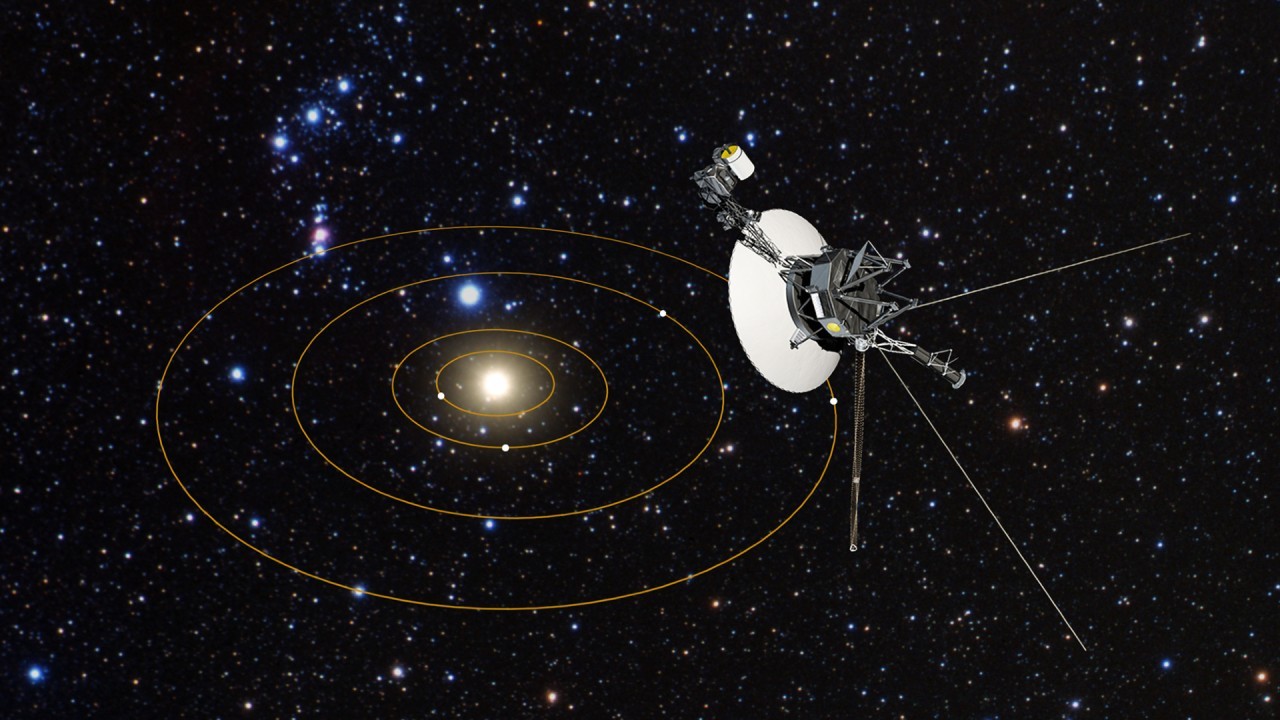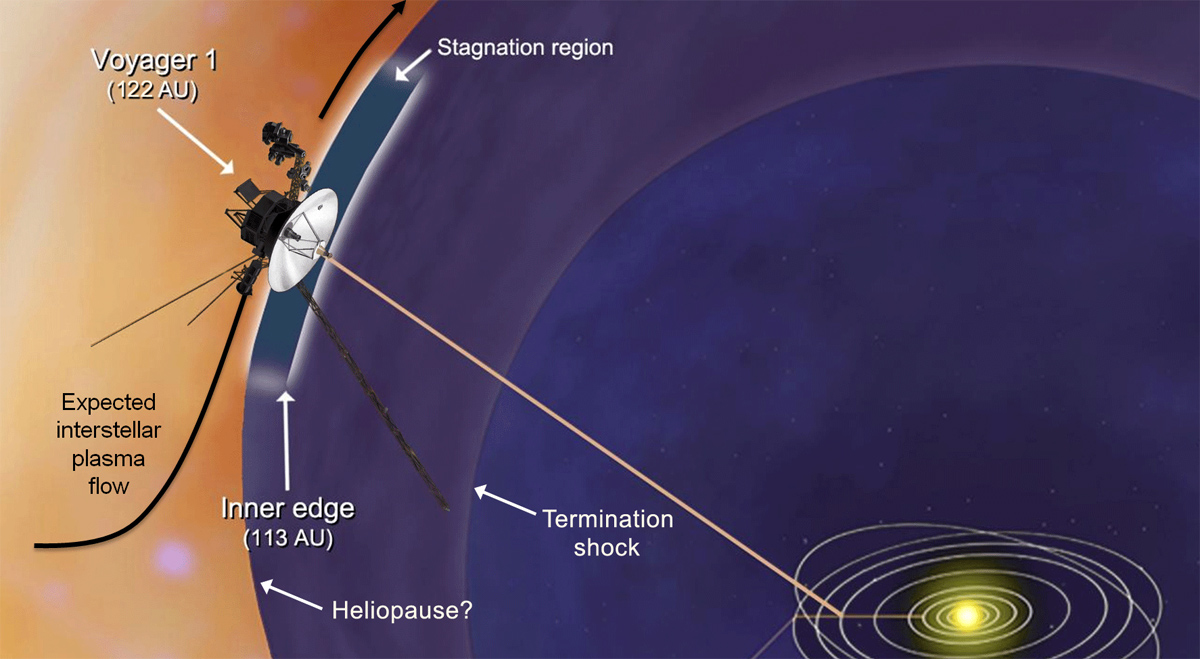How Fast Is The Voyager 1 Spacecraft Traveling? Exploring The Speed Of Humanity's Farthest Space Probe
Picture this: a tiny spacecraft launched way back in 1977, traveling through the vastness of space, and still sending us signals from billions of miles away. That's right, folks, we're talking about the legendary Voyager 1 spacecraft. It's not just any space probe; it's humanity's farthest traveler, and its speed is mind-blowing. So, how fast is the Voyager 1 spacecraft traveling? Let’s dive deep into this cosmic mystery and uncover the secrets of this incredible journey.
When you think about space exploration, Voyager 1 stands out like a superhero in the vast universe. This little probe has been cruising through the cosmos at an incredible pace, and its story is nothing short of awe-inspiring. It's not just about the distance it has covered but also the groundbreaking discoveries it has made along the way.
As we explore the speed of Voyager 1, we’ll uncover fascinating details about its journey, the technology behind its propulsion, and the challenges it faces in the uncharted territories of interstellar space. So, buckle up, because this is going to be one heck of a ride!
Read also:Exploring The Life And Marriage Of Khamzat Chimaev
Table of Contents
- Introduction: The Speed of Voyager 1
- Understanding Voyager 1: A Brief Overview
- How Fast is Voyager 1 Traveling?
- The Technology Behind Voyager 1's Speed
- The Distance Voyager 1 Has Covered
- Mission Goals and Achievements
- Challenges Faced by Voyager 1
- What’s Next for Voyager 1?
- The Significance of Voyager 1's Journey
- Conclusion: Humanity's Farthest Space Probe
Introduction: The Speed of Voyager 1
Voyager 1 is not just any spacecraft; it’s a symbol of human ingenuity and our relentless pursuit of knowledge. Launched by NASA in 1977, this probe has been traveling at an astonishing speed, making it the fastest human-made object ever. The speed of Voyager 1 is a testament to the advancements in space technology and our ability to explore the unknown.
So, how fast is it traveling? Well, Voyager 1 is currently zipping through space at a speed of about 38,000 miles per hour (or roughly 17 kilometers per second). That’s faster than a speeding bullet, and it’s been maintaining this pace for over four decades. But what makes this speed so remarkable? Let’s find out.
Understanding Voyager 1: A Brief Overview
What is Voyager 1?
Voyager 1 is a space probe launched by NASA on September 5, 1977. Its primary mission was to study the outer planets of our solar system, but it has far exceeded its original objectives. Designed to last for just a few years, Voyager 1 has proven to be a resilient traveler, continuing its journey into interstellar space.
Here’s a quick rundown of some key facts about Voyager 1:
- Launched: September 5, 1977
- Primary Mission: Study Jupiter and Saturn
- Current Location: Interstellar Space
- Speed: Approximately 38,000 miles per hour
Why is Voyager 1 Important?
Voyager 1 represents humanity’s first steps into the great unknown. It’s not just a piece of machinery; it’s a message in a bottle, carrying a golden record with sounds and images of Earth. This record is like a time capsule, offering a glimpse of life on our planet to any extraterrestrial beings that might come across it.
How Fast is Voyager 1 Traveling?
Voyager 1’s speed is a marvel of engineering and physics. At 38,000 miles per hour, it’s traveling faster than any other human-made object in space. But what does this speed mean in the grand scheme of things? To put it into perspective, Voyager 1 covers about 1.1 billion miles every decade. That’s a lot of ground (or should we say, space) covered!
Read also:Secure Remote Access With Remoteiot Ssh A Comprehensive Guide
But how does it maintain this speed? Well, Voyager 1 uses a combination of gravity assists and its own propulsion system to keep moving forward. These gravity assists, where the probe uses the gravitational pull of planets to gain speed, were crucial in helping it reach its current velocity.
The Technology Behind Voyager 1's Speed
How Does Voyager 1 Maintain Its Speed?
Voyager 1 relies on a combination of technologies to maintain its incredible speed. Its propulsion system uses hydrazine fuel, which provides the necessary thrust to keep it moving. Additionally, the probe’s trajectory was carefully planned to take advantage of gravitational assists from planets like Jupiter and Saturn.
These gravity assists were like slingshots, giving Voyager 1 an extra boost as it passed by these massive planets. Without them, the probe wouldn’t have been able to achieve its current speed and reach interstellar space.
The Role of Solar Wind and Cosmic Rays
As Voyager 1 travels through space, it encounters various forces that can affect its speed. Solar wind and cosmic rays are two of the main factors that influence its journey. Despite these challenges, Voyager 1 continues to move forward, thanks to its robust design and advanced technology.
The Distance Voyager 1 Has Covered
Voyager 1 has traveled an incredible distance since its launch. As of 2023, it’s over 15 billion miles away from Earth. To put that into perspective, it’s so far away that it takes over 22 hours for its signals to reach us. That’s right, folks, when you send a message to Voyager 1, you’ve got to be patient because it takes a while to get a reply!
But how does it communicate from such a vast distance? Voyager 1 uses a powerful antenna to send signals back to Earth. These signals are received by NASA’s Deep Space Network, a global array of antennas that communicate with spacecraft in deep space.
Mission Goals and Achievements
What Were Voyager 1's Original Goals?
Voyager 1 was originally designed to study the outer planets of our solar system, specifically Jupiter and Saturn. It provided us with stunning images and valuable data about these gas giants, revolutionizing our understanding of them. But its journey didn’t stop there. After completing its primary mission, Voyager 1 continued its voyage into the outer reaches of our solar system and beyond.
Major Discoveries Made by Voyager 1
Throughout its journey, Voyager 1 has made numerous groundbreaking discoveries. It was the first spacecraft to provide detailed images of Jupiter’s moons and Saturn’s rings. It also detected the presence of volcanic activity on Jupiter’s moon Io, a discovery that shocked scientists at the time.
But perhaps its most significant achievement is becoming the first human-made object to enter interstellar space. This milestone marks a new chapter in our exploration of the universe and opens up exciting possibilities for future missions.
Challenges Faced by Voyager 1
Despite its incredible achievements, Voyager 1 faces numerous challenges in its journey. One of the biggest challenges is the harsh environment of space. Cosmic radiation, extreme temperatures, and the lack of sunlight all pose significant risks to the probe’s systems.
Another challenge is maintaining communication with Earth. As Voyager 1 moves further away, the strength of its signals diminishes, making it harder for us to stay in touch. However, NASA continues to work on innovative solutions to overcome these challenges and ensure that Voyager 1 remains operational for as long as possible.
What’s Next for Voyager 1?
While Voyager 1’s journey is far from over, its future is uncertain. The probe’s power supply is gradually diminishing, and it’s expected to lose the ability to communicate with Earth within the next decade. However, even after it goes silent, Voyager 1 will continue its journey through the cosmos, carrying the message of humanity to the stars.
Scientists are already planning future missions to build on the legacy of Voyager 1. These missions aim to explore deeper into interstellar space and uncover more secrets about our universe. Who knows what discoveries await us as we continue to push the boundaries of space exploration?
The Significance of Voyager 1's Journey
Voyager 1’s journey is more than just a scientific endeavor; it’s a symbol of human curiosity and our desire to explore the unknown. It reminds us that the universe is vast and full of mysteries waiting to be uncovered. As we continue to follow Voyager 1’s path, we are inspired to reach for the stars and strive for greater understanding of our place in the cosmos.
Its speed, distance, and achievements are a testament to the power of human ingenuity and our ability to overcome challenges. Voyager 1 has shown us that the possibilities of space exploration are endless, and it’s up to us to keep pushing forward and exploring the wonders of the universe.
Conclusion: Humanity's Farthest Space Probe
In conclusion, Voyager 1 is a remarkable achievement in the field of space exploration. Its speed, distance, and discoveries have redefined our understanding of the universe. By traveling at an incredible 38,000 miles per hour, Voyager 1 has become humanity’s farthest traveler, venturing into the unknown depths of interstellar space.
As we continue to follow its journey, let’s remember the importance of curiosity and the pursuit of knowledge. Voyager 1’s story is a reminder that the universe is full of mysteries waiting to be uncovered, and it’s up to us to keep exploring and pushing the boundaries of what we know.
So, what do you think? Are you inspired by Voyager 1’s journey? Leave a comment below and let us know your thoughts. And don’t forget to share this article with your friends and family. Together, let’s celebrate the incredible achievements of Voyager 1 and the spirit of exploration that drives us all!


